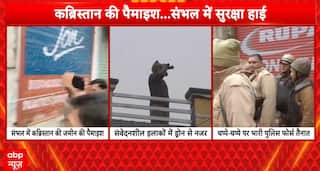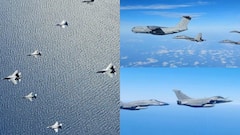China Has Converted Rather Peaceful Border Into A Live Border, Ex-Envoy Ashok Kantha Says
Exclusive Interview: As 2023 marks third anniversary of Galwan clash, military standoff at LAC has deteriorated with no progress at all on de-escalation or de-induction of troops, according to Ashok K. Kantha, former Indian envoy to Beijing.

New Delhi: Three years since the military standoff between India and China began, the eastern Ladakh sector of the Line of Actual Control (LAC) has now become a live border as troops with heavy artillery continue to remain deployed on both sides with no progress taking place as far as de-escalation is concerned, according to Ashok K. Kantha, veteran diplomat and former Ambassador of India to China.
The India-China border standoff, which began in April-May 2020 as Beijing amassed troops in eastern Ladakh, also witnessed bloodshed for the first time since 1975 at the Galwan river valley on the intervening night of June 15-16 that resulted in the killing of 20 Indian soldiers by the People’s Liberation Army (PLA).
“What they have done in the last three years is to try and change the status quo at four locations which was in complete violation of the understanding reached between the two countries … Induction of additional troops close to LAC is also in violation of the understanding between the two sides," said Kantha in an exclusive interview to ABP Live.
Kantha, who was Secretary (East) at the Ministry of External Affairs, also said, “The Chinese have converted their borders which were relatively peaceful until early 2020 into a live border where you have deployment of troops in fairly high numbers along with artillery, air support and other military wherewithal, which is not at all desirable.”
He added: “The present situation has led to peace and tranquillity being disturbed very seriously in the border areas. The progress we have made in the India-China relations since 1988 we had managed to normalise relations in different areas, made fair amount of progress, that was predicated on very clear understanding that both sides will ensure peace and tranquillity in the border areas while we engage in serious discussions to resolve the boundary question.”
Ever since the border standoff began, India and China have had several rounds of negotiations to mitigate the immediate problem both at the military as well as diplomatic levels.
So far, there had been disengagement in five friction points – Galwan valley, northern bank of Pangong Tso, Kailash Range, PP (Patrolling Point) 17A in Gogra and PP15 in Gogra Hot Springs area – resulting in the creation of buffer zones or demilitarised zones.
“Creation of so-called buffer zone or demilitarised zones led to a situation where neither side is patrolling. While this has been achieved, the downside is that we are unable to patrol some of the areas that we were patrolling until May 2020. So there has been change in status quo to that extent. And, in two large pockets – Depsang Plains and Demchok area – we have not been able to achieve disengagement,” said Kantha.
According to him, the disengagement process has been worked out with the creation of buffer zones and those should be treated as “temporary expedient”.
“That (buffer zones) should not become the new normal … We can formalise patrolling but areas that we were patrolling earlier, we should retain the right of visiting those areas, not give up our right. Once we have disengagement, hopefully we have de-escalation of troops and de-induction of troops. There again we have to bear in mind that given the terrain on both sides, given the Chinese infrastructure we have which is so much better than us, time taken to de-induct additional troops is much higher on our side compared the Chinese side,” Kantha said.
‘Galwan-type Incident Can’t Be Ruled Out’
Kantha said with “absolutely no progress” in the de-escalation plan, under which the level of troops deployed must be substantially reduced, the chances of a clash, similar to what happened in Galwan, remains high.
“A situation where there is deployment of troops of in close proximity and in escalated numbers is inherently risky. It can lead to accidents. It can lead to unintended consequences. I believe that neither India, nor China is inclined to move towards a military conflict. But you cannot rule out unanticipated developments, you cannot rule out accidents,” he highlighted.
Kantha stressed: “So, the present situation needs to be addressed with a sense of priority. That’s why we have taken a categorical and clear position, that let’s restore peace and tranquillity in border areas, let us restore status quo ante before we can bring the relations back to the normal track. Our relations have gone through a sharp downturn. And today we are possibly at the lowest ebb.”
Explaining the current situation in the standoff, the veteran diplomat said the Depsang Plains’ Y-Junction area, also called the Bottleneck area, gives India access to five patrolling points – PP10, 11, 11A, 12 & 13 – which the Chinese have blocked.
“Our troops, since early 2020, are unable to go to these PPs. They have been blocked so these discussions are going on how to restore patrolling in those areas,” he said, adding that the same situation exists in the Charding-Ninglung Nala area of Demchok where both India troops as well as graziers are unable to access.
However, he said, several rounds of talks between India and China on these two areas have “not yielded the desired outcome”.
‘China Wants India To Not Focus On Maritime Domain’
Kantha, who was instrumental in negotiating some of the key India-China border protocols, said that the real motive behind China’s 2020 military incursion was to keep New Delhi “bogged down” with the land borders thereby lessening its focus on strengthening the maritime domain.
“What has been achieved through these actions is to see that we remain bogged down by our land borders and that the cost of border management for India goes up, that since we are preoccupied on our land borders, we cannot focus on the maritime dimension and also perhaps conveying to us a message that when it comes to India-China border situation, others including the Americans is not of much help to us,” he said.
This, Kantha said, has not only “seriously impacted” the bilateral relationship between India and China, but has also “sent out a signal to rest of the international community that China is a country with a pattern of behaviour which is rather disturbing, rather worrisome and this is not something limited India-China borders”.
“This is not something limited to India-China borders. We can see similar kinds of behaviour in the South China Sea, the East China Sea, the Taiwan Strait… So, there is a pattern of aggressive behaviour, of trying to change status quo through salami slicing, incremental steps by staying short of an all-out military conflict and changing ground realities,” he added.
Related Video
India@2047 Summit: Modi Calls for Innovation, Reforms, and National Resolve






































